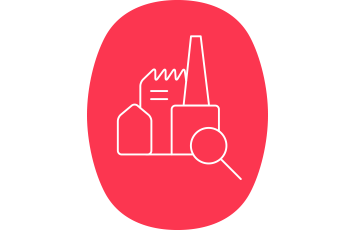Updated IMO amendments bring sustainability to the forefront
With climate challenges top of mind, the International Maritime Organization (IMO) is taking an ever more active role in establishing a more sustainable global fleet. Several new sustainability- and climate-focused amendments are set to come into force in 2022, supporting the marine industry’s path to a greener future. These include updates to the Efficiency Design Index (EEDI), Energy Efficiency Existing Ship Index (EEXI), Carbon Intensity Indicator (CII) and the Ballast Water Management Convention (BWM)[1].
Which IMO amendments are coming into force in 2022?
- Phase 3 of the EEDI requires new levels of energy efficiency for certain ship types (e.g., containerships, gas carriers, cruise ships)
- The EEXI and CII require existing ships to improve their technical efficiency and ensure a linear reduction of carbon intensity
- For BWM, the IMO has established commissioning testing for newly installed ballast water treatment systems
IMO strengthens EEDI requirements
In January 2013, the EEDI began requiring newbuilds to function at a minimum energy efficiency level per ton mile. New vessel designs had to meet energy thresholds specific to their ship type, and comply with a carbon reduction level set to increase every five years. From Phase 1 in 2015, to Phase 2 in 2020, the EEDI required ships to move from a 10% to 20% reduction in carbon intensity. Phase 3 calls for all vessels to achieve at least a 30% reduction, with some ship types targeting 50%.
The latest milestone for the EEDI was agreed at the June 2021 meeting of the IMO’s Marine Environment Protection Committee (MEPC). Instead of entering into force in 2025, Phase 3 of the EEDI will now begin on April 1, 2022, for certain type of vessels. This change is applicable to containerships, general cargo ships, refrigerated cargo carriers, combination carriers, gas carriers, LNG carriers and cruise ships.
In addition, efficiency requirements for containerships were raised to a 50% energy reduction rate. The Committee also introduced clearer language around installed propulsion power for maintaining ship maneuverability in adverse weather.
These technical measures aim to favor energy efficient equipment, limit harmful emissions and inspire ongoing technological innovation, without dictating terms to marine stakeholders. As a non-prescriptive, performance-based mechanism, the EEDI enables ship owners, designers and builders to determine their vessel’s route to reducing carbon intensity. Stakeholders may implement their preferred solutions, so long as the ship achieves compliance with the EEDI’s reference level of energy efficiency for the vessel type.
Director for Regulatory and Institutional Affairs
Bureau Veritas Marine & Offshore
Sustainability regulations are gaining traction in the marine industry, with new requirements, evolving climate targets, and also changing deadlines. This is why it is crucial for shipowners to work closely with classification societies who can provide clear explanations, insight and guidance. Marine decarbonization is a collective effort, and our job is to ensure no one gets lost in the regulatory minutiae.
Reducing emissions with technical and operational measures
In June 2021, the MEPC put forward two regulations – the EEXI and the CII – to minimize marine emissions. Like the EEDI, the EEXI is a framework for determining the energy consumption and CO2 emissions of in-service vessels over 400 GT. The CII requires in-service ships of over 5,000 GT to measure and report CO2 emissions, rating vessels on a five-tiered scale for performance.
Regulations 23 and 25 of the latest IMO amendments of MARPOL Annex VI now require existing ships to improve their technical efficiency, achieving parity of performance with equivalent newbuilds. Regulation 28, which concerns operational measures, imposes a linear reduction of in-service ships’ carbon intensity from 2022 to 2030. Regulations for both the EEXI and the CII are slated to enter into force on November 1, 2022.
Introducing ballast water commissioning testing
Both in-service ships and newbuilds have long had to install ballast water treatment systems onboard to limit marine species transfer between regions. However, shipowners have voiced concerns about performance, requesting proof that treatment systems work according to type approval and meet IMO D-2 discharge standards.
In response, the MEPC has adopted amendments for ballast water management (BWM) that require commissioning testing of BWM systems. Samples of ballast water from the discharge line that have been treated onboard must be collected and analyzed by an approved laboratory. Sampling should occur in accordance with BWM.2/Circ 70 guidance, and verifies the proper performance of ballast water treatment systems. Ships will be required to undergo commissioning testing beginning on June 1, 2022.
Calculating EEXI and CCI with VeriSTAR Green
To comply with EEXI and CII requirements, shipowners must determine their vessels’ environmental footprint and meet specific targets for emissions reduction. To support shipowners, Bureau Veritas has developed VeriSTAR Green, a web application that performs advanced EEXI and CII calculations. In addition, the platform enables users to report fuel consumption data in line with IMO Data Collection System (DCS) and EU MRV (Monitoring, Reporting and Verification) regulations. With VeriSTAR Green, shipowners can prepare for compliance with EEXI and CII requirements in time for IMO’s 2022 deadline.
Bureau Veritas provides regulatory expertise
As a classification society, Bureau Veritas is dedicated to staying ahead of IMO’s latest regulations and amendments. Our regulatory experts have a thorough understanding of MEPC updates, and are prepared to guide shipowners through the EEDI, EEXI, CII and BWM. Our regulatory and technical expertise for sustainability is supported by key digital tools for managing vessels’ fuel consumption and energy efficiency. However environmental regulations evolve, Bureau Veritas will be ready to help marine stakeholders achieve compliance, and shape a better maritime world for future generations
[1] The International Convention for the Control and Management of Ships’ Ballast Water & Sediments









